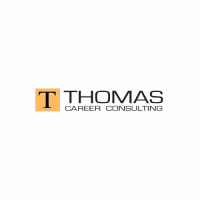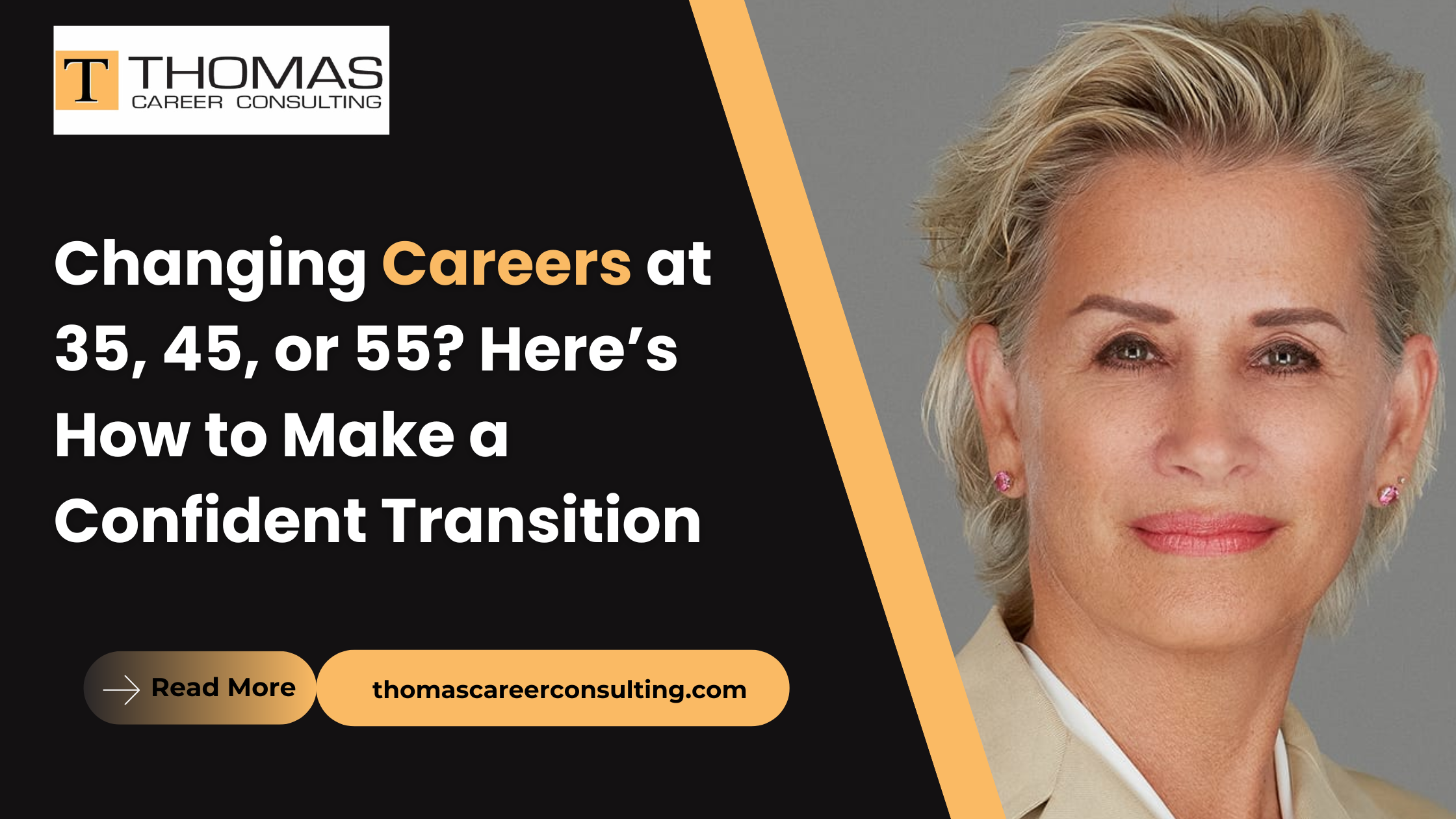How Do You Know It’s Time for a Career Transition — and What Should You Do First?

Strong 8k brings an ultra-HD IPTV experience to your living room and your pocket.
The Question That Keeps You Up at Night
You stare at your computer screen, mindlessly scrolling through job postings. Your current role feels stagnant. You’ve been wondering:
“Is it time for a change? And if so... what do I do next?”
If this sounds familiar, you’re not alone. Every year, millions of professionals — from recent graduates to seasoned executives — wrestle with this pivotal question.
Career transitions can feel overwhelming, but they also hold immense opportunity. Knowing when and how to move forward is key.
At Thomas Career Consulting, I’ve helped countless clients navigate these crossroads with clarity and confidence. In this article, I’ll share insights, real-life stories, and practical steps drawn directly from my career counseling practice — so you can move forward with purpose.
Is It Really Time for a Career Transition?
The Subtle (and Not-So-Subtle) Signs
Sometimes, the signs are obvious:
👉 You’ve been laid off.
👉 Your industry is shrinking.
👉 You dread going to work.
Other times, they’re more subtle — a persistent sense of dissatisfaction or the nagging feeling that your career path no longer aligns with your values.
Common indicators it may be time for a career transition:
✅ You no longer feel challenged or inspired.
✅ You’ve outgrown your role or company.
✅ Your work-life balance has deteriorated.
✅ You want to pursue a new passion or calling.
✅ Your industry no longer matches your interests or strengths.
✅ Your values or life circumstances have shifted.
If you’re nodding along to several of these, trust that inner voice. It’s telling you something important.
👉 For more, read: Making Your Next Career Move: How Do You Know When the Time Is Right? — I explore these signals in depth.
The Emotional Side of Change
Facing Fear and Uncertainty
Change is hard — even positive change. It’s normal to experience:
- Self-doubt: “Am I good enough to make this leap?”
- Fear of failure: “What if I try something new and it doesn’t work out?”
- Confusion: “What direction should I go in?”
In my career counseling sessions, I coach clients through these emotional barriers every day. In fact, this is one of the key benefits of working with a professional counselor. Read more about this here → 5 Benefits of Hiring a Career Counselor.
Remember: Career transitions aren’t just about resumes and job boards — they’re deeply personal journeys. Having a trusted guide makes all the difference.
Before You Leap — Know Yourself First
The Foundation of Smart Career Decisions
One of the first things I emphasize with clients: Self-knowledge is everything. Without it, career decisions are like sailing without a compass.
In our career counseling work together, we’ll explore:
✅ Your core interests
✅ Your natural abilities and transferable skills
✅ Your personal and professional values
✅ Your personality type and preferred work styles
✅ How these align with real-world labor market trends
Why does this matter? Because the most satisfying careers are those that fit who you are — not just what’s available on a job board.
Assessments I Use in Career Counseling
At Thomas Career Consulting, I utilize several scientifically validated tools to help clients gain deep insights into themselves:
- The Strong Interest Inventory: Identifies your top interests and key skills, helping you discover satisfying career options.
- Myers-Briggs Type Indicator (MBTI): Clarifies personality type and how it aligns with occupational choices.
- FIRO-B Assessment: Uncovers how interpersonal behaviors influence workplace dynamics and team fit.
These tools, combined with personalized coaching, provide a powerful foundation for your career transition.
Story Spotlight — John’s Career Reinvention
Let me share the story of a recent client, “John” (name changed for privacy).
The Challenge:
John was a successful mid-level manager in the financial industry. After 15 years, he felt trapped — his role was no longer fulfilling, and the corporate culture no longer aligned with his values.
The Process:
John reached out for a consultation. We began with an intake session to clarify his goals, followed by key assessments. Through our work together, we discovered his passion for coaching and leadership development — areas barely touched in his prior role.
We brainstormed industries and roles where these strengths could shine. John pursued training in organizational leadership and successfully transitioned into an internal leadership development role at a Fortune 500 company.
The Result:
A career that aligned with his evolving interests, values, and lifestyle goals.
👉 John’s takeaway? “I couldn’t have made this leap without understanding myself first — and having a roadmap for change.”
What Should You Do First?
Step 1: Take Stock
Start by asking yourself these questions:
- What do I love (and dislike) about my current role?
- What are my strongest skills and transferable strengths?
- What values do I want my next role to reflect?
- What lifestyle and work-life balance do I seek?
Step 2: Seek Professional Guidance
While you can do some self-reflection on your own, many clients discover that working with a professional career counselor brings clarity faster — and helps avoid costly mistakes.
I help clients:
✅ Move past self-doubt and fear
✅ Explore new career paths aligned with their strengths
✅ Identify promising industries and roles
✅ Build actionable short- and long-term career plans
✅ Master job search and interview strategies
Step 3: Research and Explore
Once you’ve clarified your goals, it’s time to explore:
- Conduct informational interviews
- Research potential industries
- Evaluate job market trends
- Assess educational or credentialing needs
Tip: My Career Resources page includes a curated list of tools to support this stage.
Step 4: Build a Strategic Action Plan
Together, we’ll create a customized roadmap that may include:
✅ Updating your resume and LinkedIn profile
✅ Networking strategically
✅ Pursuing targeted job applications
✅ Developing new skills or credentials
✅ Preparing for interviews
✅ Planning for salary negotiation and job acceptance
Practical Tips for a Successful Transition
1️⃣ Don’t Rush — But Don’t Wait Too Long
It’s wise to explore options thoroughly — but endless hesitation can lead to paralysis. Strike a balance between thoughtful preparation and bold action.
2️⃣ Build a Support Network
Career transitions are emotionally demanding. Surround yourself with positive supporters — and don’t be afraid to seek professional guidance.
3️⃣ Manage Financial Planning
If your transition may involve temporary income changes, plan accordingly. A financial buffer reduces stress and gives you more freedom to choose the right path.
4️⃣ Stay Open to Possibilities
Many clients discover career paths they had never considered before. Stay open-minded and trust the exploration process.
5️⃣ Focus on Storytelling
Your resume and LinkedIn profile aren’t just lists of past jobs — they should tell the right story about who you are and where you’re headed. This is a core strength of my approach at Thomas Career Consulting.
You’re Closer Than You Think
Career transitions can feel daunting — but with clarity, strategy, and expert support, they become pathways to new opportunities and deeper fulfillment.
If you’re wondering whether it’s time for a career transition, trust that inner nudge. You don’t have to figure it out alone.
Let’s explore it together.
I offer a free consultation to help you take the first step toward a career that truly fits.
👉 Contact Mindy Thomas today and start your journey.
Note: IndiBlogHub features both user-submitted and editorial content. We do not verify third-party contributions. Read our Disclaimer and Privacy Policyfor details.







